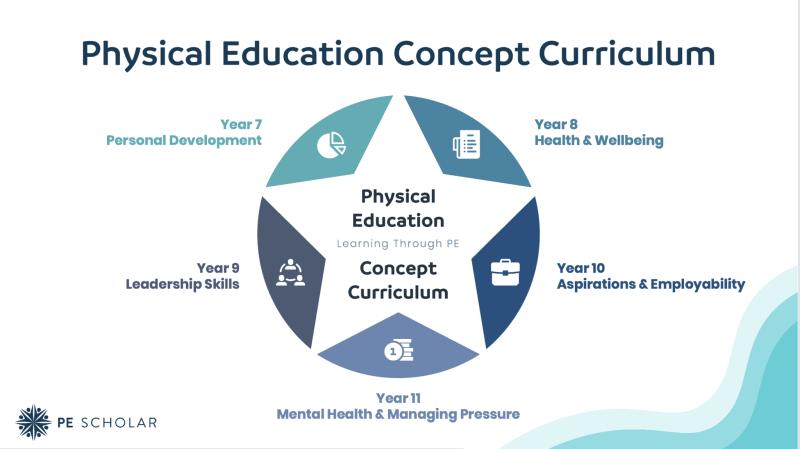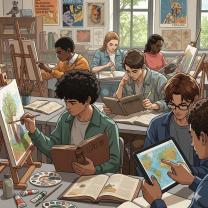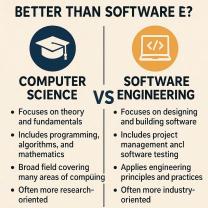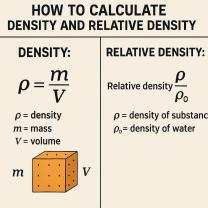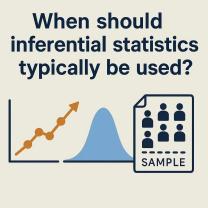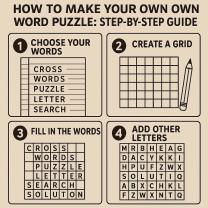What is educational concept?
What Is an Educational Concept?
An educational concept is a foundational idea or principle that shapes how teaching and learning are understood, structured, and practiced. These concepts serve as building blocks for educational theories, instructional strategies, curriculum design, and classroom interactions.
Key Elements of an Educational Concept:
Philosophical Foundation
Beliefs about what knowledge is, how people learn, and why education matters (e.g., constructivism, behaviorism).
Learning Theories
Concepts such as active learning, scaffolding, multiple intelligences, or cognitive development (e.g., Piaget, Vygotsky).
Instructional Principles
Ideas that guide teaching, such as differentiated instruction, student-centered learning, or inquiry-based learning.
Curriculum and Assessment
Concepts like competency-based learning, formative vs. summative assessment, or learning outcomes.
Social and Cultural Context
Recognizing how diversity, equity, culture, and technology influence educational goals and methods.
Examples of Educational Concepts:
Lifelong Learning – Learning doesn't stop at school; it continues throughout life.
Zone of Proximal Development – Learners grow best when guided just beyond their current ability.
Experiential Learning – Learning through experience, reflection, and active engagement.
Student Agency – Empowering students to have voice and choice in their learning.
Why It Matters:
Understanding educational concepts helps:
Teachers design effective lessons.
Students understand how they learn best.
Administrators shape policies and curriculum.
Researchers develop innovative learning models.
How has the concept of education evolved over time?
The concept of education has undergone a profound evolution throughout human history, shifting from informal knowledge transmission to highly structured, globalized systems.
Here's a look at how the concept has transformed over time:
I. Early & Ancient Civilizations (Pre-literate to ~500 CE):
- Informal & Survival-Based: In pre-literate societies, education was largely informal, focusing on the direct transmission of practical skills (hunting, gathering, cooking), social norms, and religious beliefs necessary for survival and cultural continuity.
Learning occurred through imitation, observation, and storytelling within families and communities. - Elite & Specialized: As societies became more complex (e.g., Egypt, Mesopotamia, China, India), formal education emerged, often tied to religious institutions, temples, or palaces.
It was primarily reserved for the elite (scribes, priests, rulers, officials) and focused on specialized skills like writing (hieroglyphs, cuneiform), mathematics, astronomy, and administration. - Philosophical & Civic (Greece & Rome):
- Greece (e.g., Athens, Sparta): Shifted towards developing well-rounded citizens.
Athenian education emphasized philosophy, rhetoric, logic, music, poetry, and physical training to foster critical thinking and civic participation. Spartan education was rigorously focused on military training and discipline. - Rome: Heavily influenced by Greece, but with a greater emphasis on law, oratory (public speaking), and practical subjects like engineering and agriculture, aiming to prepare citizens for political and social advancement.
- Greece (e.g., Athens, Sparta): Shifted towards developing well-rounded citizens.
- Oral Tradition Dominant: Despite the rise of writing, oral tradition remained crucial for transmitting knowledge, with memorization and recitation as key learning strategies.
II. The Middle Ages (~500 CE - 1500 CE):
- Church-Centric: In Europe, education became primarily controlled by the Church.
Monasteries and later cathedral schools were the main centers of learning, preserving classical knowledge and imparting religious doctrine, Latin, grammar, logic (the Trivium), arithmetic, geometry, astronomy, and music (the Quadrivium). - Limited Access: Education was largely for the clergy and nobility, with very low literacy rates among the general population (peasants and serfs).
Girls were largely excluded from formal academic pursuits, though noble girls might learn music, dance, and etiquette. - Emergence of Universities: From the 11th and 12th centuries, universities began to emerge from cathedral schools (e.g., Bologna, Paris, Oxford).
These focused on theology, law, and medicine, fostering scholasticism (combining faith and reason).
III. The Renaissance & Enlightenment (14th - 18th Centuries):
- Humanism & Broader Curriculum (Renaissance): A "rebirth" of classical learning led to humanism, which valued human potential and achievements.
Education shifted from purely religious focus to include a broader liberal arts curriculum: literature, history, moral philosophy, and the arts. The invention of the printing press revolutionized access to books and the spread of knowledge. - Reason, Science & Individualism (Enlightenment): Enlightenment thinkers (e.g., John Locke, Jean-Jacques Rousseau) emphasized reason, science, and individual rights.
- Child-Centered Learning: Locke's empiricism and Rousseau's ideas about natural education influenced child-centered learning approaches, moving away from rote memorization.
- Public & Secular Education: The idea of education as a tool for public empowerment and social reform gained prominence. This led to early movements for compulsory education laws and the rise of secular education alongside religious instruction. Curricula began to integrate scientific methods and empirical approaches.
- Child-Centered Learning: Locke's empiricism and Rousseau's ideas about natural education influenced child-centered learning approaches, moving away from rote memorization.
IV. The Industrial Revolution (18th - 19th Centuries):
- Universal & Compulsory Education: The need for a literate, disciplined, and skilled workforce for factories drove the push for universal public education. This era saw the widespread establishment of public schooling systems and the gradual implementation of compulsory education laws.
- Standardization & Efficiency: Education became more standardized, often resembling a "factory model" with age-graded classrooms, regimented schedules, and an emphasis on punctuality, obedience, and basic literacy/numeracy.
The aim was to produce compliant and productive workers. - Teacher Training: "Normal schools" were established to train professional teachers, reflecting the growing importance of formal education.
V. The 20th Century: Expansion, Reform, and Diversification:
- Progressive Education: Movements like those led by John Dewey emphasized experiential learning, critical thinking, problem-solving, and the development of democratic values.
The focus shifted from rote memorization to active, child-centered learning. - Increased Access & Equity:
- Compulsory Education: Became widespread globally, leading to significant increases in literacy rates.
- Higher Education Expansion: Post-World War II initiatives (like the GI Bill in the US) dramatically expanded access to universities.
- Civil Rights & Inclusion: Movements fought for desegregation and equal access to education for all, including marginalized groups and individuals with disabilities.
- Curriculum Broadening: Curricula diversified to include vocational training, arts, physical education, and a wider range of academic subjects, aiming for holistic development.
- Assessment & Accountability: Rise of standardized testing and assessment systems to measure learning outcomes.
VI. The Digital Age (Late 20th Century - Present):
- Technology Integration: The internet, computers, and digital tools have fundamentally transformed education.
- Online Learning: From early online courses to fully digital classrooms and degree programs (accelerated by the COVID-19 pandemic), online learning offers unprecedented flexibility and accessibility.
- Personalized Learning: AI and adaptive learning platforms analyze student progress and tailor content and pace to individual needs, allowing for customized support and feedback.
- Gamification & Interactivity: Incorporating game elements (points, badges) and interactive technologies (VR/AR) to increase engagement.
- Online Learning: From early online courses to fully digital classrooms and degree programs (accelerated by the COVID-19 pandemic), online learning offers unprecedented flexibility and accessibility.
- Globalized Learning: Digital tools enable global collaboration and access to education from anywhere, breaking geographical barriers.
- Focus on 21st-Century Skills: Beyond content knowledge, there's an increasing emphasis on skills like critical thinking, creativity, collaboration, communication, digital literacy, and adaptability to prepare students for a rapidly changing world and job market.
- Lifelong Learning: The concept of education as a continuous process throughout life has become more prominent, driven by rapid technological and societal changes.
In essence, the concept of education has evolved from an informal process of transmitting essential survival skills to a highly formalized, diverse, and increasingly personalized endeavor aimed at fostering individual growth, critical thinking, civic participation, and economic productivity in an ever-evolving global society.
